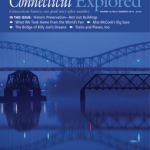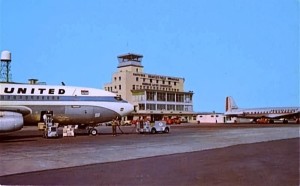By Elizabeth J. Normen
 Is historic preservation only about saving old buildings from demolition? Unless you’re deeply involved in the field, you might not know that current thinking looks at the bigger picture and appreciates that individual buildings are components of something larger, such as a neighborhood or a community, that deserves preserving, too. Those of us outside the field also might think that a building worth saving has to be connected to someone famous or important. But preservationists are increasingly appreciating that work-a-day buildings such as factory-worker housing and barns are also important to preserving our history and culture. And there’s yet another dimension that goes beyond buildings altogether—and that dimension is largely what this issue explores.
Is historic preservation only about saving old buildings from demolition? Unless you’re deeply involved in the field, you might not know that current thinking looks at the bigger picture and appreciates that individual buildings are components of something larger, such as a neighborhood or a community, that deserves preserving, too. Those of us outside the field also might think that a building worth saving has to be connected to someone famous or important. But preservationists are increasingly appreciating that work-a-day buildings such as factory-worker housing and barns are also important to preserving our history and culture. And there’s yet another dimension that goes beyond buildings altogether—and that dimension is largely what this issue explores.
In this issue, we’re looking at preservation of objects—very large objects—such as historic airplanes and railroad cars, bridges and monuments. Preserving such artifacts usually requires a building-sized budget and specialized skills and knowledge. Museums and historical organizations that collect planes and trains rely on volunteers whose skills were often honed on the job of manufacturing them in the first place, as you’ll learn in the stories from the New England Air Museum (page 29) and the Railroad Museum of New England (page 20). Sometimes the large object is an element of a building, such as the fun find in Jason Scappaticci’s story on page 26 about a piece of the 1964-1965 New York World’s Fair that found a second life in a church in Groton.
A historic preservation issue wouldn’t be complete, though, without one good story about saving a building. Karin Peterson of the State Historic Preservation Office came across a trove of material that revealed the dramatic story behind saving Connecticut’s first property listed on the National Register of Historic Places (page 32). The Amos Bull House has had more lives than a cat and has recently reopened after a major fundraising effort and restoration project by its current owner and steward Connecticut Landmarks. (Full disclosure: Until last fall I was a member of that organization’s board and capital campaign committee, and I was a donor to the project.) CT Explored assistant publisher Mary Donohue, who is an architectural historian and who spent 30 years in the State Historic Preservation Office, worked in the Amos Bull building for many years. We thank her for chairing this issue and championing its message: “Historic Preservation—it’s not just about buildings!”
Connecticut Explored for Your Tablet!
The stars have finally aligned (or so it feels) to allow us to offer member/subscribers the option to read CT Explored on their iPads or tablets. We are introducing this option as a free add-on to subscriptions. To receive e-CT Explored e-mail publisher@ctexplored.org and let us know you’d like to receive it. When each issue comes off press, we’ll e-mail all subscribers a link to the issue. Open the e-mail on your tablet and click on the link. We hope you’ll find it easy and an enjoyable way to take Connecticut Explored with you wherever you go.
Elizabeth J. Normen, Publisher

